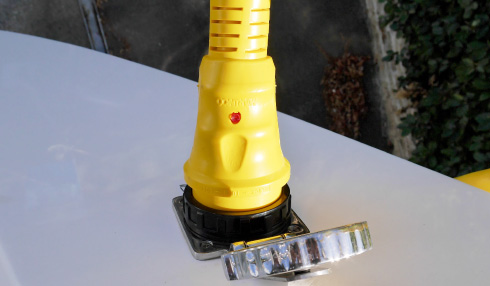Stratification : Sandwich or Monolithic construction ?
Structure:
regardless of the application mode of the polyester resin, the question arises of the laminated piece’s structure. The resin is generally applied on a fiberglass or even carbon fabric, but other layers can be interposed according to the structural properties required for the part.
The monolithic structure
An element consisting exclusively of tissue layer is said to be monolithic. This is traditionally the case for the hulls, and this remains for the moment true for the AMEL 64 and 55. This type of structure has the advantage of being extremely resistant thanks to its density and the glass fibers that run through the hull in all directions. This parameter is appreciated below the waterline where the risks of impact during a long trip must imperatively be taken into account. For AMEL 50, the bottom (below the waterline) benefit from this monolithic structure while the upperworks (above the waterline) are sandwiched.
The sandwich structure
With method we interpose a thickness of material between the layers of fiber glass. In the case of AMEL 50, we can mention the upperworks of the hull made out of a sandwich fiberglass / PVC foam. We obtain a lighter and better isolated structure while maintaining a good solidity. Approximately 3 layers of fiber glass are applied, followed by 20mm panels of PVC foam which is covered with 2 more layers of tissue. This type of foam is intended to be infused and has a grid of grooves which, once filled with resin, constitute a reinforcement to stiffen and homogenize the structure.
Another example of sandwich construction is the traditional use of balsa in the lamination of our decks, still in use on AMEL 64 and 55. This exotic wood known for its very low density allows us for decades to build very thick decks, isolated both thermally and phonetically, while maintaining a reasonable weight on a sailboat. In this case, we use thick balsa panels in which we drill a large number of holes that will be filled up with resin in order to connect the two layers of fiber glass around them.
It is armed with these theoretical notions that I propose you to move on the description of the manufacturing process of an AMEL 50 hull. This precise case is particularly interesting since we will exploit the infusion and the “contact” stratification, as well as sandwich and monolithic construction.





